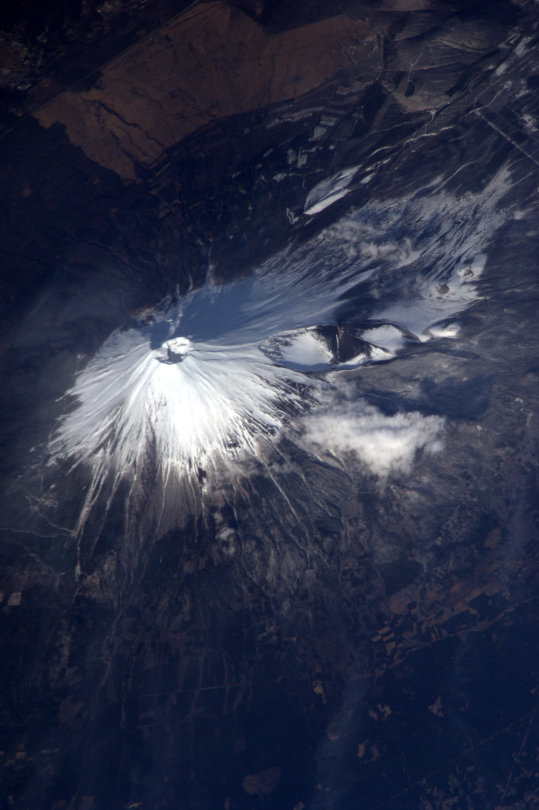Rod Shegem is a professional based in Huntington Beach, California. He is a seasoned Racing Director with years of experience in the automotive industry. In 2010, Rod started his own auto export company, and he successfully ran it through 2014. He then went back to racing with Lamborghini and Mercedes AMG as a Racing Director for a race team which competed in Pirelli World Challenge (North America's top production car-based racing championship) among other series. Rod Shegem is well known for previously serving as Chief Racing Director at Dime Racing, an Irvine, California-based company specializing in innovative technologies originating from racing.
Don't wanna be here? Send us removal request.
Text
Some things that people apparently don't know about climate change:
Climate change is normal. There has always been fluctuations in Earth's climate. Scientists aren't concerned that the climate is changing, they're worried about how fast it's changing
Greenhouse gases are normal. The greenhouse effect is natural and in fact predates human existence. Again, scientists aren't concerned that there are greenhouse gases, they're worried about the amount of them that are being produced.
The USA makes up less than 5% of the world's population, but contributes 16.7% of global CO2 emissions
Current models suggest that average global temp will increase by 1.5-2.0°C by 2100, and 0.5-7°C by 2300. That doesn't seem like much, but even lowballing those estimates will be substantially more than it has increased in the past 5 million years
Temp change is not equal in all places. Polar regions warm faster than tropical. Factors like wind and ocean currents affect whether temp will change or not. Some seasons will change more than others. Just because the temperature was lower than average one year doesn't mean that global warming isn't real.
It's called climate change for a reason, it's not all just warming. Take Texas this year for example, they had stupid low temperatures for that area, which is definitely abnormal, but doesn't point to evidence that global warming isn't real, it just means that the atmosphere is doing some weird shit because of things happening
Basically, despite the overall global temp increasing, some areas will also experience extreme temps in seasons, like one area will have extreme low temps in the winter and/or extreme high in the summer
The change in temp also affects the water cycle, which causes some areas to have much wetter soil and some to have much drier soil
The change in climate and other abiotic factors in ecosystems have been forcing rapid evolution of organisms in affected environments
But, if organisms can't evolve fast enough, then we're looking at another mass extinction, particularly arctic animals that are being affected most by the climate change causing loss of habitat and resources, and extremely sensitive organisms like almost all amphibians, like frogs and newts etc
The ocean absorbs ~1/3 of the global CO2 emissions per year. That's good right? No, because when dissolved in water, CO2 forms carbonic acid, which lowers the pH of the whole ocean, acidifying it, wreaking havoc on the ecosystem
4K notes
·
View notes
Text







The fires from 3 months ago are still burning and the recent air quality has gone back to unhealthy again. I can't believe it's still going... I'm so tired of this.
This is the last of my 6 part series based on the biggest wildfire in CA that turned our sky red. Don't let these paintings become a constant reality as climate change worsens. Tomorrow is election day in the US, if you haven't voted already, go vote! Vote for a future that our children can breathe in.
12K notes
·
View notes
Photo

trying something new and different with some vector illustrations! I might make more of or like these… I think she turned out pretty cute haha
505 notes
·
View notes
Photo

A time of crisis is not just a time of anxiety and worry. It gives a chance, an opportunity, to choose well or to choose badly. —Desmond Tutu
It is our responsibility to handover Earth in a flourishing, vigorous form to our coming generation. We must express our gratitude to Mother Earth by taking care of it; by protecting it and by making it a healthier and greener place to live.
699 notes
·
View notes
Text
These things are important, but they won't save us.
1K notes
·
View notes
Text
How the World Can Run on Sustainable Fuel
Sustainable fuel, similar to stem cells, seems like the miracle solution for everyone's transportation problems. Its use and production are growing all over the world. The entire world can run on the use of biofuels.
Types of Biofuels
The two main types of biofuels are bioethanol and biodiesel. These fuels are categorized into first, second, third, and fourth generations. The first generation fuels are derived from crops, and the second generation consists of biomass, such as plant or animal materials. The third-generation includes algae fuels, and the fourth generation includes electrofuels and solar fuels.
Ethanol fuel is the most widely used biofuel in the world, especially in Brazil and the U.S. It's derived from the fermentation of wheat, sugar, corn, and other crops, and can be mixed in with gasoline or used as a replacement.
Biodiesel is the most widely used sustainable fuel in Europe. It's derived from oil or fat and can be mixed with diesel fuel or used in its pure form. It is an environmentally friendly product that does not pollute the soil or water. More than one billion gallons are consumed in the U.S. annually, and over 10 million tons are consumed in Europe.
Current Levels of Production
There are various issues related to biofuel production, such as energy usage, carbon emissions, environmental damage, and the food vs. fuel debate. Researchers are continuing to evaluate the negative impacts of production on society and the environment. Additionally, the government must approve mandates to produce millions of gallons of biofuels.
Despite the criticism, the global production of biofuels exceeded 150 billion liters in 2018. Sustainable fuels helped to run 3% of the vehicles on the road. There continues to be significant plans for the future use of sustainable energy. The International Energy Agency has set plans to reduce a quarter of the world's dependency on oil and meet biofuel demand by 2050. Currently, the growth of sustainable fuels is estimated to be 3% every year.
It seems that the world will never run out of sustainable fuel. It is also non-toxic to the environment and works as efficiently as nonrenewable energy does. Although there are drawbacks, there are far more advantages that make it a viable energy source in the future.
#rod shegem#environmental awareness#environment#climate change#global warming#biofuels#biotech#sustainability#renewable energy
2 notes
·
View notes
Text
COVID-19's Effect on Air Quality
The new trend of social distancing due to the COVID-19 outbreak has created a few unforeseen benefits. As more people stay indoors or work from home, there have been reported reductions in air pollution in several cities. As social distancing rules begin to lift in several countries, scientists are unsure of whether these effects will be temporary or permanent.
Improved Air Quality
Several months after the COVID-19 crisis began in March 2020, scientists have noticed significant air quality improvements and have conducted scientific studies on the matter. They claim that changes in atmospheric chemical reactions have led to reduced toxic emissions in the air and a cleaner atmosphere.
However, they mention that the link between the pandemic and cleaner air is nonlinear. Atmospheric chemistry is too complicated to measure and determine the exact cause of changes in air quality.
Reductions in Nitrogen Oxides Levels
The most obvious cause of this improved air quality is less travel due to stay-at-home pandemic orders. Fewer vehicles are on the road and in the sky, so there are reduced emissions of nitrogen oxides, a major contributor to air pollution. NO2 is found in smog that hangs over urban areas and can be seen from space. Satellite images of major cities have proven the scientists' evidence of visible reductions in air pollution.
The images show decreased levels of NO2 in areas where there are fewer diesel-powered vehicles. Diesel cars are known to emit more of this emission than gasoline-powered cars. However, stating that reduced NO2 emissions are linked directly to the COVID-19 pandemic is a complicated issue.
The studies of meteorology and emissions are based on seasonal variations. Naturally, the levels of NO2 decrease as winter becomes spring. Furthermore, NO2 levels have been declining due to other environmentally-conscious human activities, such as ride-sharing and the use of green vehicles.
Cleaner air is one of the numerous side effects of the coronavirus pandemic. However, there is no clear linkage between improved air quality and an unstable health crisis that has only occurred in recent months. Although having fewer cars on the road is one result, many other factors cause air pollution levels to rise and decline over time.
#rod shegem#environmental awareness#environment#air pollution#air quality#covid-19#pandemic#global pandemic#climate change#global warming
0 notes
Text
Finding a Career in Environmental Conservation
The urgent nature of climate change means that interest and opportunities in the field of environmental conservation are growing, but so is the competition. This means that people who want to enter this field need to have the right mix of knowledge and experience, even for entry-level positions. There could be dozens of applicants competing for a single job. Passion is important, but so is networking, extracurricular activities, and a coherent career plan.
People who are still in school should research environmental conservation and sustainability jobs and think about the specific roles they would like to take and what sectors they would like to work in. This can open up opportunities and help them better prepare for their future careers than a more general desire to work in "sustainability." They will be able to develop unique strengths that can set them apart from other candidates.
One way to find out more about the jobs that are out there is to look at LinkedIn and similar sites for professional networking to find out what types of jobs employers are offering and what people's career paths look like.
Developing "soft skills" is important. This includes such abilities as critical thinking, problem-solving, communication, and leadership skills. Many extracurricular activities offer excellent opportunities to develop and display these skills.
They can also give students more experience in the areas that interest them and demonstrate their commitment to the environment and sustainability. Knowing the many opportunities and a specific focus can come in handy because it can allow a dedicated student to start pursuing that focus. For example, students interested in sustainable civil engineering might look at very different opportunities compared to those who want to work in the nonprofit sector.
Volunteering and internships both offer chances to develop soft skills, acquire more knowledge and network. Students may also want to consider joining professional organizations that concentrate on the environment. Some of these organizations might have resources aimed particularly at students. School career centers may also be excellent resources. In addition to giving students more information about their chosen career, they may help develop a concrete career plan.
#rod shegem#environmental awareness#environment#conservation#careers#jobs#climate change#global warming#environmental conservation#going green
3 notes
·
View notes
Photo

I almost forgot to posts today’s yeehawgust! and after I had so much fun looking at pictures of desert owls for this! So sorry!
34K notes
·
View notes
Photo

NASA Spotlight: Astronaut Soichi Noguchi
Soichi Noguchi was selected as an astronaut with the Japan Aerospace Exploration Agency in 1996. A native of Yokohama, Kanagawa, he is currently a mission specialist for NASA’s SpaceX Crew-1 launch taking flight to the International Space Station on Nov. 14. Soichi will be the first international crewmember on Crew Dragon and the first international partner astronaut to fly aboard three types of orbital spacecraft – the U.S. space shuttle, the Russian Soyuz, and now the SpaceX Crew Dragon! Talk about impressive. He received a B.S. in Aeronautical Engineering in 1989, master’s degree in Aeronautical Engineering in 1991, Doctor of Philosophy in Advanced Interdisciplinary Studies in 2020, all from the University of Tokyo.
Soichi took time from preparing for his historic mission to answer questions about his life and career:
You recently earned a doctorate in philosophy. What made you do it?
After my second flight, I started this research about your sensory system in zero gravity. I used a my own personal video, which I took during my last two flights at the International Space Station. I had a lot of interesting discussions amongst young professionals and students at the University of Tokyo about the research. It was a fun experience – but I would not do it again!
Space is a risky business. Why do it?
Space IS definitely a risky business. But the reward is higher than the risk so that’s why we take it.
Do you have a message for boys and girls in Japan who are interested in science and engineering?
Three words: Space. Is. Waiting.

Aside from mission objectives and tasks, what’s a personal goal for this mission?
We have a lot of interesting missions to do, but my personal goal is to return home with lots of fun stories.

What was it like to get the phone call to become an astronaut?
It was 25 years ago, but I still remember the voice vividly. I got a call from Dr. Mamoru Mohri, the very first JAXA astronaut, and he said “Welcome to the Astronaut Corps.” When I got the call to be part of the Crew-1 mission, I was a lot less nervous than when I was assigned to my first mission, but the excitement remains the same.
Can you describe your crew mate Mike Hopkins in one sentence?
He is a natural leader that takes care of the team really well, and he’s fun to play around with.

Star Trek or Star Wars?
Star Wars… just because!

Can you share your favorite photo or video that you took in space?
My favorite photo is Mount Fuji because I see the mountain almost every day when I was a child. It’s definitely breathtaking to see Mount Fuji from space.

What personal items did you decide to pack for launch and why?
I have lots of family photos, and I would put it inside my sleep station. Definitely one of the most challenging things about spaceflight is not experiencing zero gravity, not the rocket, but time away from family.
How would you describe spacewalking outside the space station?
It’s an excursion. The view of the Earth is just breathtaking because you are just one glass away from the vacuum of space. There’s nothing between you and Earth.

What are you most excited about for the future of human space exploration?
I would say I’m most excited for interplanetary travel to become more common so that the school kids can go to Mars on their field trip.
What would you say to someone looking to follow in your footsteps?
Don’t worry, be happy!
How has spaceflight evolved since your first launch and stay aboard the International Space Station in 2005?
This is definitely an exciting moment. We’re starting to see more players in the game. SpaceX is the frontrunner, but soon we’ll see Boeing, Sierra Nevada and Axiom. So the International Space Station will soon have more players involved, and it will be a lot more fun!
youtube
Thank you for your time, Soichi, and good luck on your historic mission! Get to know a bit more about Soichi and his NASA astronaut crew mates Victor Glover, Michael Hopkins, and Shannon Walker in the video above.
Watch LIVE launch coverage beginning at 3:30 p.m. EST on Nov. 14 HERE.
Make sure to follow us on Tumblr for your regular dose of space: http://nasa.tumblr.com
10K notes
·
View notes
Text
The UK's Efforts in Combatting Climate Change
Meeting consumer demand for beef and other commodities in the EU and UK entails using large amounts of environmental resources, especially land. In addition to the space to grow the animals themselves, meat production requires cropland to feed them.
The majority of soya, a commodity crop primarily used as livestock feed, is grown in countries with high deforestation rates, like Brazil. Approximately 20% of soya exports and 17% of beef exports to the EU are produced through illegal land clearing. The "contamination" of consumer products with illegally produced components is a misrepresentation to consumers. Illegal deforestation reduces the Earth’s capacity to absorb excess carbon and contributes to climate change.
Demand remains high for meat, palm oil, and other Amazonian imports potentially contaminated with illegally produced commodities, even as consumer sentiment is moving toward sustainable production. Among British respondents to a WWF survey, 81% express a desire for greater transparency on imported product labels, and 67% support government action to reduce deforestation.
Deforestation, including illegal destruction of the Amazon rainforest, has accelerated in recent years. Although Brazil’s President Bolsonaro recently authorized military enforcement’s deployment to address the stark rise in illegal logging and ranching, his history of weakening administrative enforcement of environmental protections has earned him rightful criticism.
As a global leader in the fight to reduce atmospheric carbon, and without effective support from major exporting nations, the UK now seeks to place the burden of supply chain verification and documentation onto the businesses that profit from Amazonian exports.
Under the proposed new law, large companies operating in the UK would have to show the origins of commodities like cocoa, soy, rubber, and palm oil. Businesses would be responsible for investigating suppliers, eliminating commodities produced in violation of environmental protection laws in the nations of origin, and publishing information about their products’ origins.
The proposed law has deep implications. For example, even legally produced beef might have been contaminated with illegally grown soya. An array of packaged foods and cosmetics rely on palm oil, cocoa, and soy. The UK is challenging companies in every industry to take on this task, to demand transparency and environmental protection compliance throughout their supply networks.
#rod shegem#united kingdom#environmental awareness#environment#climate change#global warming#air quality#air polluition#deforestation#ocean pollution
0 notes














